Consolidating Freedom: The conservation treatment of Cecil Skotnes and Hamilton Budaza's 'Freedom'
Date posted: 31 October 2022

Detail of Cecil Skotnes and Hamilton Budaza's Freedom, acrylic paint and varnish on woodcut, 1995. Photographs by Emma Prior.
In September 2022, Fine Art conservator Dr Isabelle McGinn in collaboration with conservator Hannes Elsenbroek and the Masters in Tangible Heritage Conservation students at the University of Pretoria completed the conservation treatment of Cecil Skotnes and Hamilton Budaza’s Freedom (1995), while conducting a workshop with the curatorial intern, Emma Prior.
Freedom was the first artwork donated to the Constitutional Court Trust, having been donated by the artists in 1995. It consists of seven panels - one large central panel carved and painted by Cecil Skotnes surrounded by six smaller panels carved and painted by Hamilton Budaza. Skotnes invited Budaza to collaborate on creating a tribute to democracy when making this artwork. It remains one of the CCAC’s most confident, optimistic and commanding works, embracing and exuding the African renaissance. The artwork had been on display in a high traffic area of the Constitutional Court public gallery for the greater part of five years.
Apparatus Used:
- Lascaux medium for consolidation
- Winsor & Newton matt artists’ varnish
- Water
- QoR watercolours
- Bamboo stick
- Scalpel blade
- Golden taklon paint brushes
- Hake brushes
- Vacuum cleaner
Cleaning and consolidating the surface

Dr McGinn and her students began by identifying damaged areas and photographing the artwork, before moving onto carefully cleaning the surface of the artwork using micro attachments on a vacuum brush to ensure that all of the dust was removed from the back of the artwork. The dust on the front of the artwork was brushed off with a soft hake brush. Removing dust from the artwork is an important step in the conservation treatment because dust can be harmful to artworks by retaining moisture and other particles that may damage the artwork and cause deterioration.
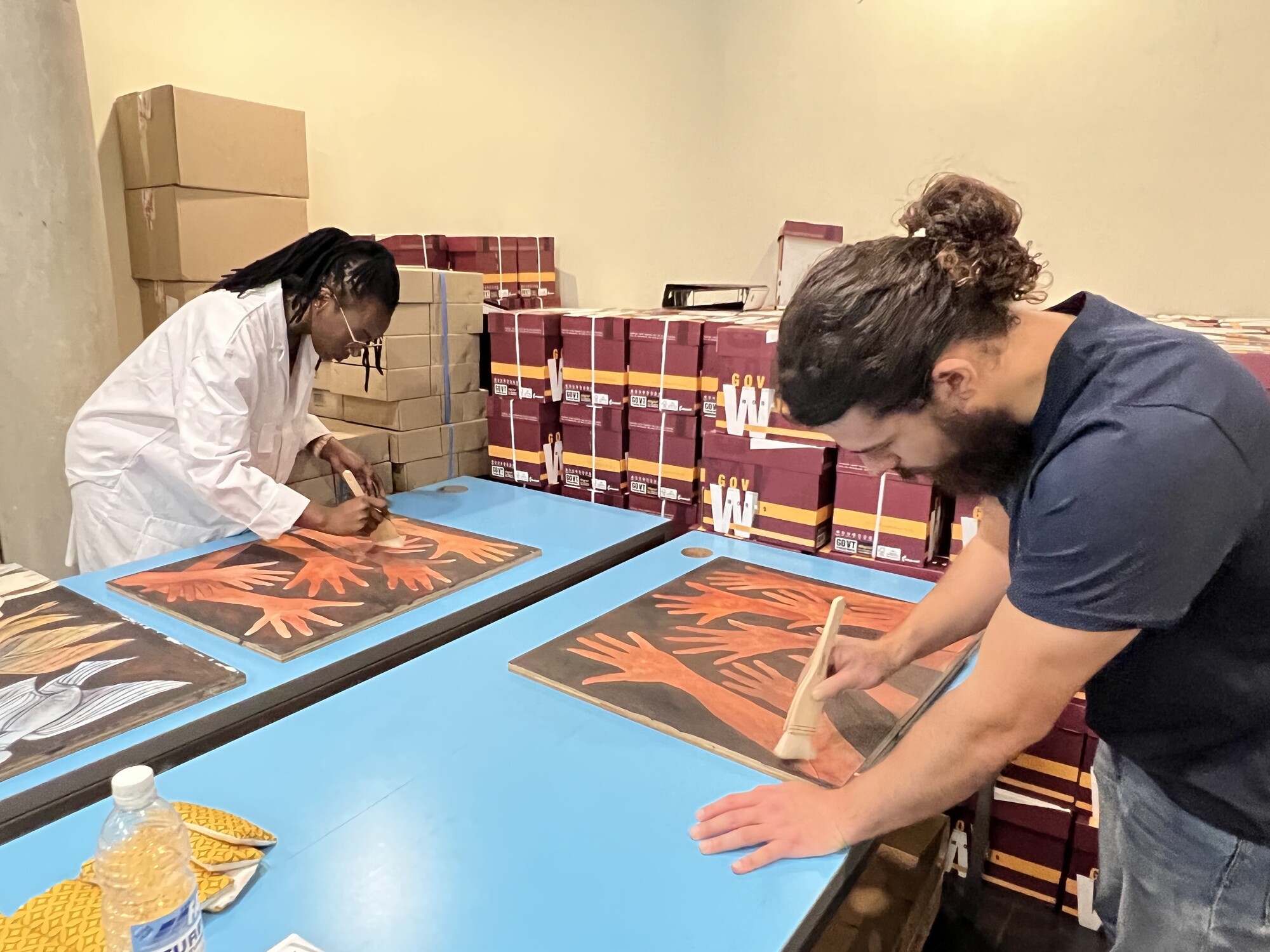
Once no dust remained on the surface, the students used a small paintbrush and Lascaux 3146 Medium for Consolidation to prepare areas with exposed wood, chips and scuff marks. Consolidating the area allows the conservation materials to properly adhere to the surface of the artwork, while ensuring that the conservation treatment process is reversible.

In-filling and painting the surface
After the Consolidation had dried, Flügger - an acrylic filler and bonding agent - was applied to the areas that had indents or missing pieces of wood; in order to create an even surface. Dr McGinn and her students created a faux wood grain on the Flügger. The visual continuity was ensured by allowing the Flügger to dry completely before the surface was smoothed using a scalpel blade.
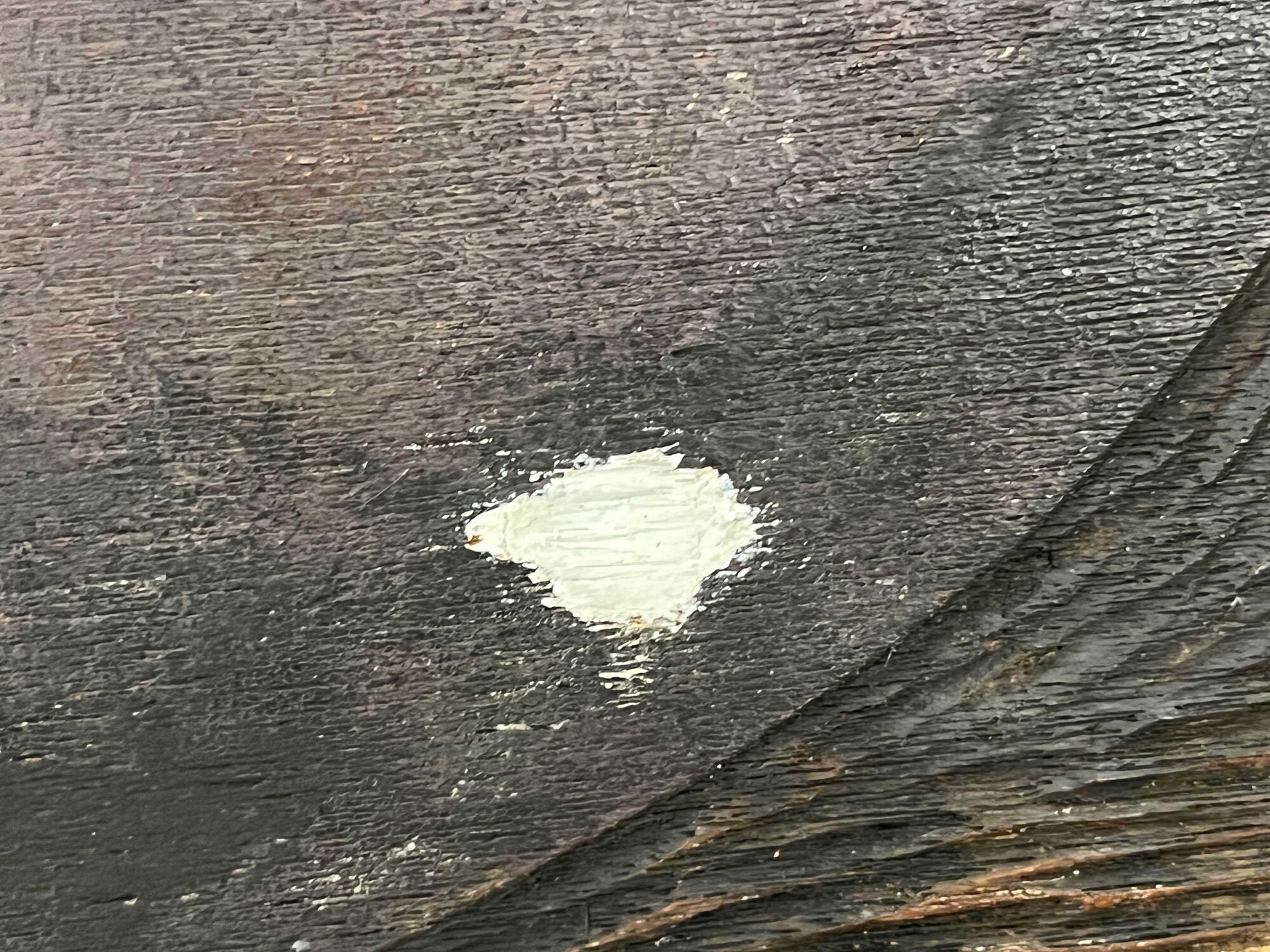
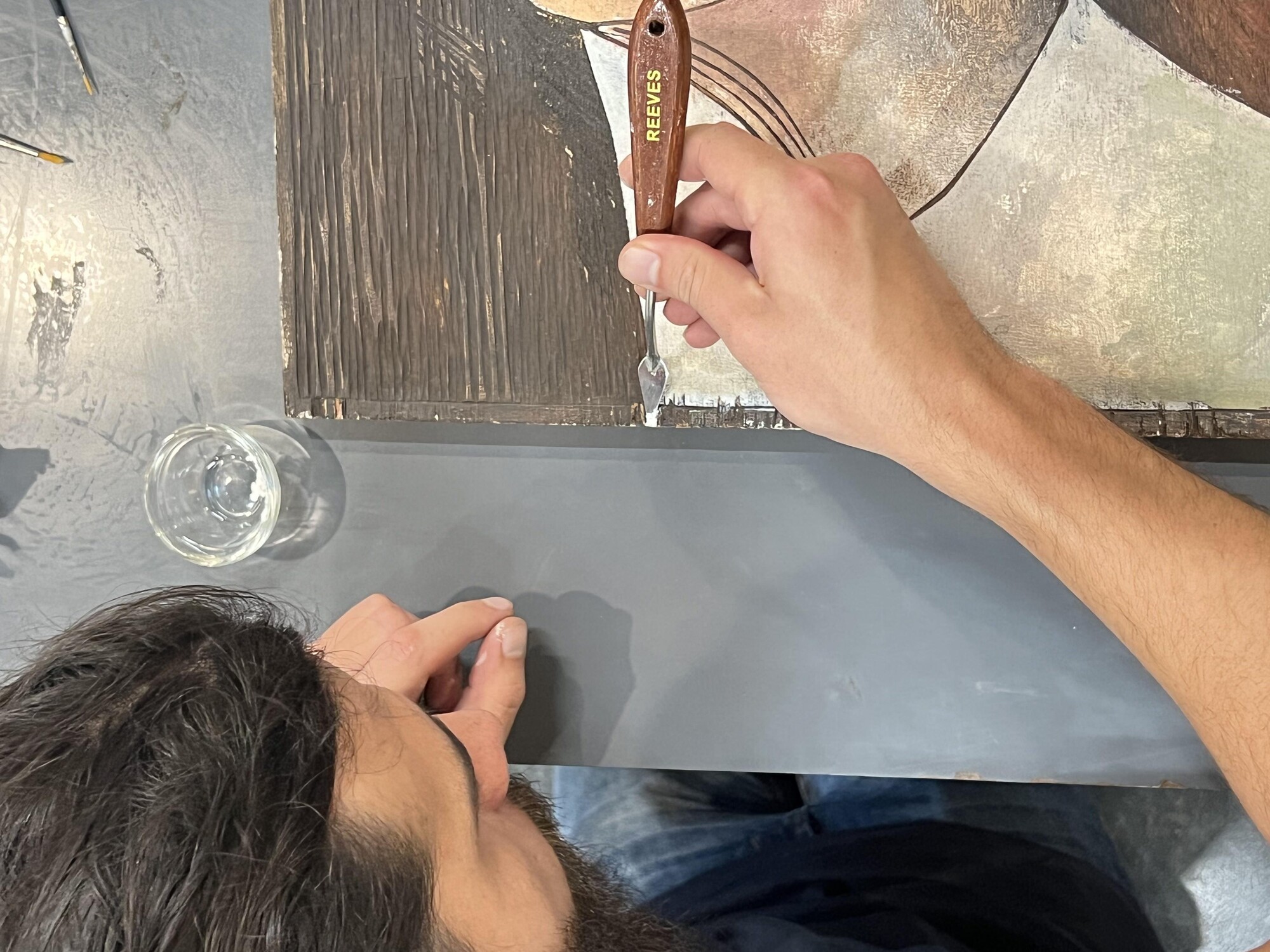
The consolidated and filled areas were painted using QoR watercolours, a highly pigmented medium with a relatively low toxicity that does not become brittle or discolour over time. The QoR watercolours can also be dissolved in water, alcohol or acetone, making it easy to remove if the artwork requires treatment in the future. The painting process is the most time consuming of all the processes, as the conservators need to perfectly match the colour on the artwork. The conservators fill the colours without altering the style or essence of the painting technique used by the artist. Finally, the treated areas are sealed with a matt varnish.

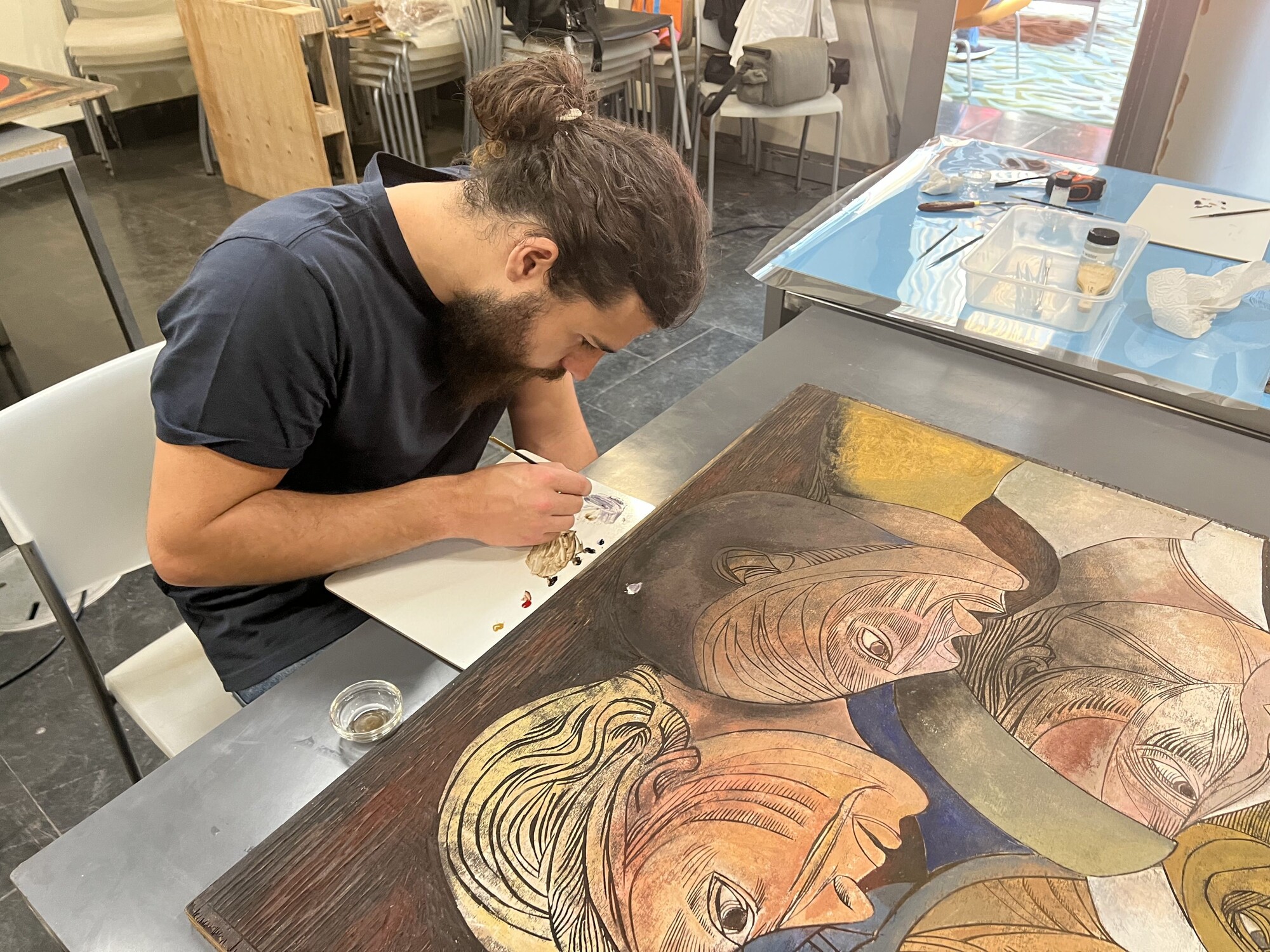
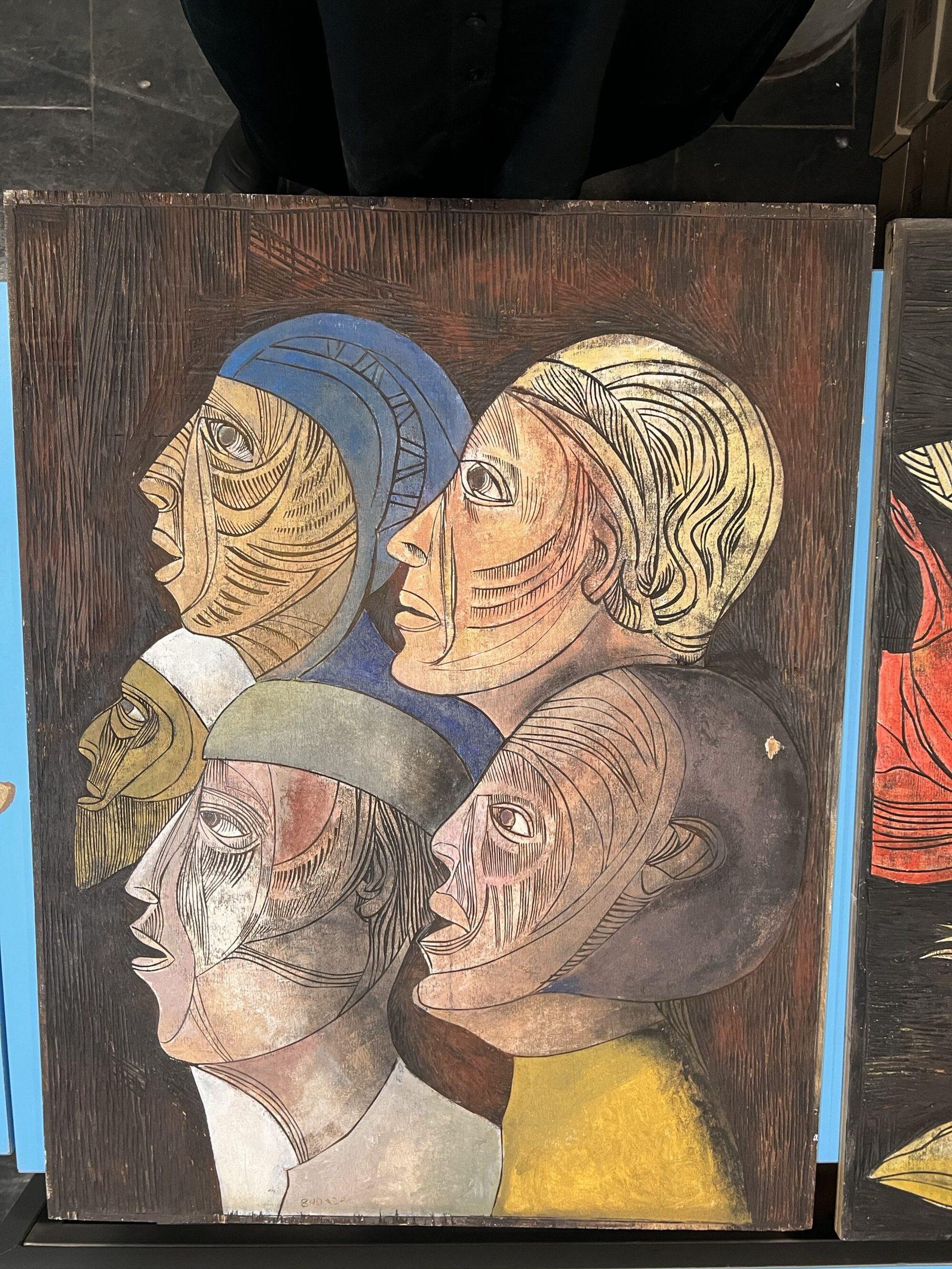
Image showing damage before conservation treatment

Image showing damage after conservation treatment
For over five years, Freedom was exhibited in an area with high foot traffic and was likely damaged by accidental scuffs from passersby. To avoid further damage to the artwork after conservation, the artwork was reframed by David Lewis Browne Framers in kiaat wood with a 2 centimetre buffer behind the artwork to avoid any water damage to the back of the wooden panels. The artwork was re-installed in the public gallery near Georgia Papageorge’s integrated artwork Through the Barrier, often referred to as ‘The Ladder to Freedom’, which stands in the basement of the original Awaiting Trial Block. Both artworks speak to themes of freedom, victory and the transition to democracy, becoming symbols of transcendence. The figure in the central panel reaches for the sky, welcoming the visitors of the Constitutional Court with open arms as they enter the foyer.
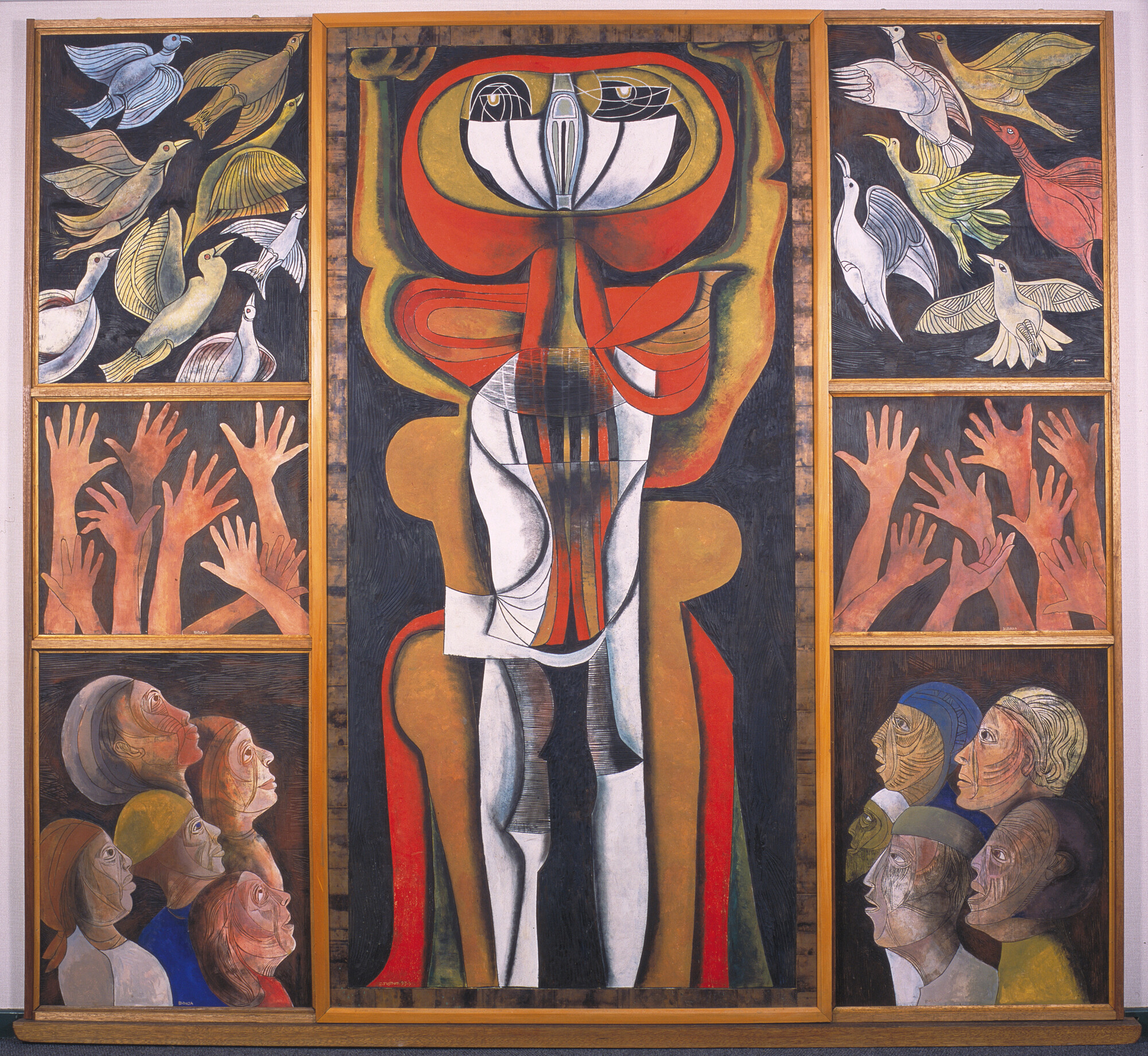
Photograph by Giséle Wulfsohn
